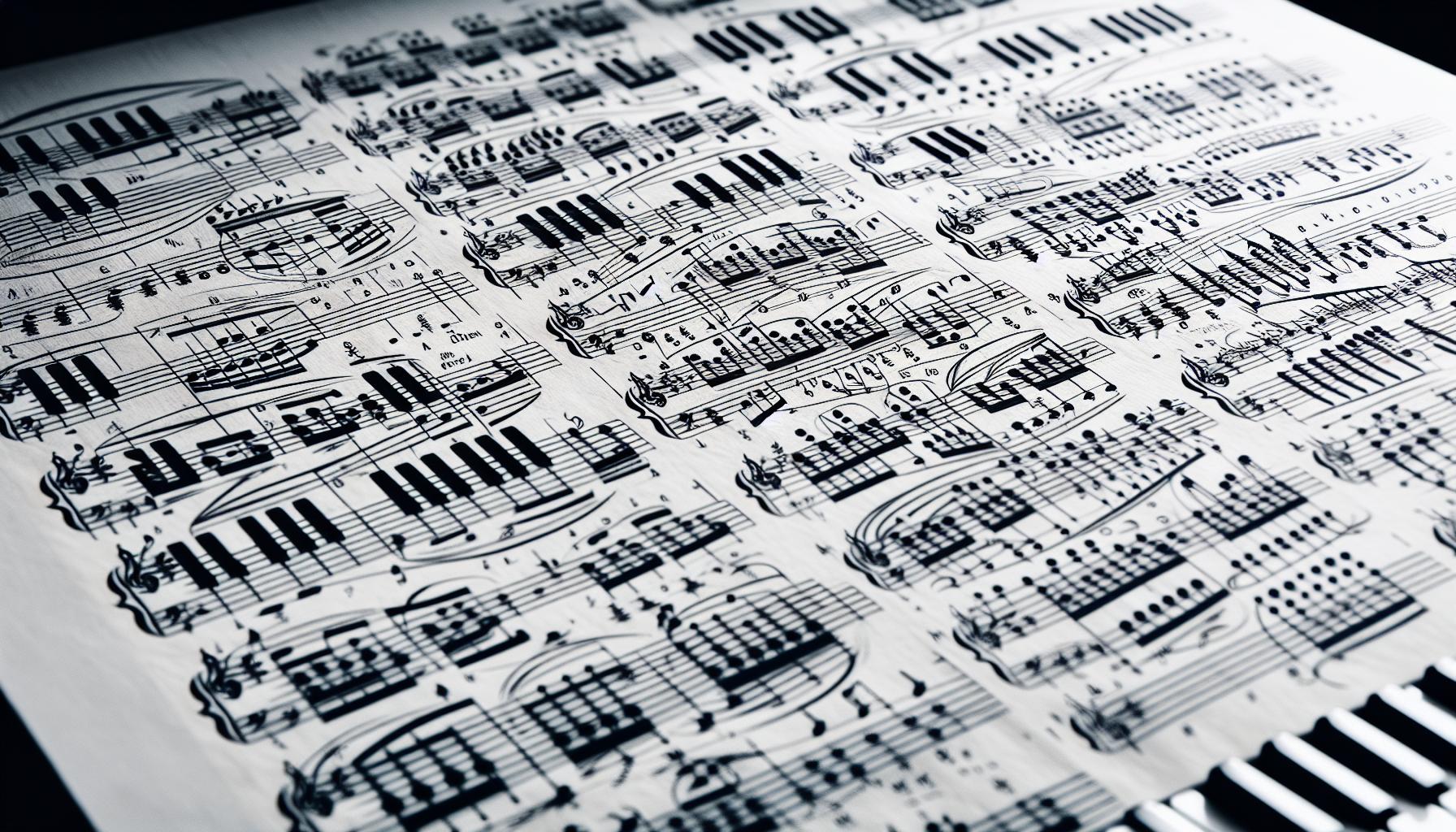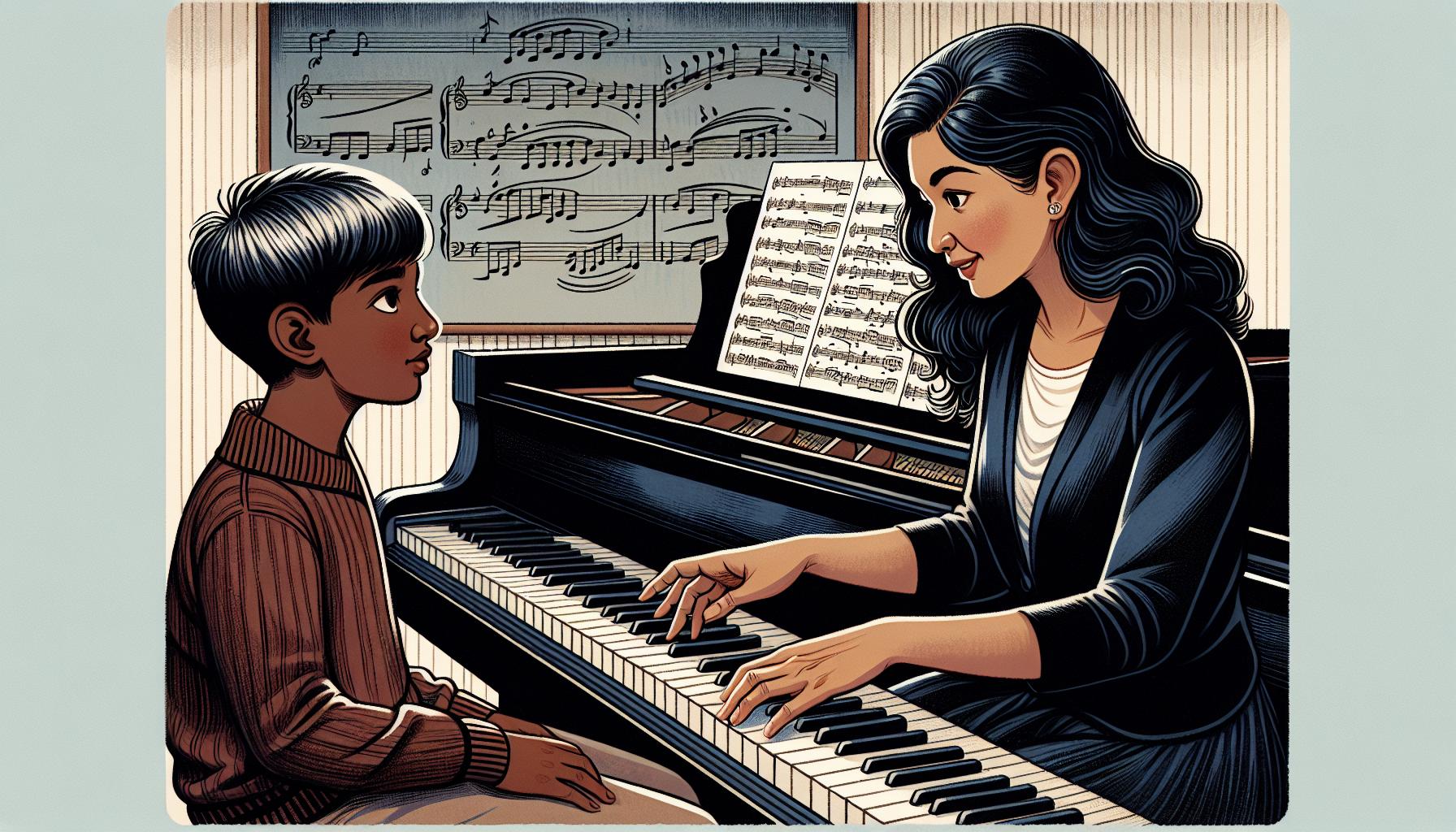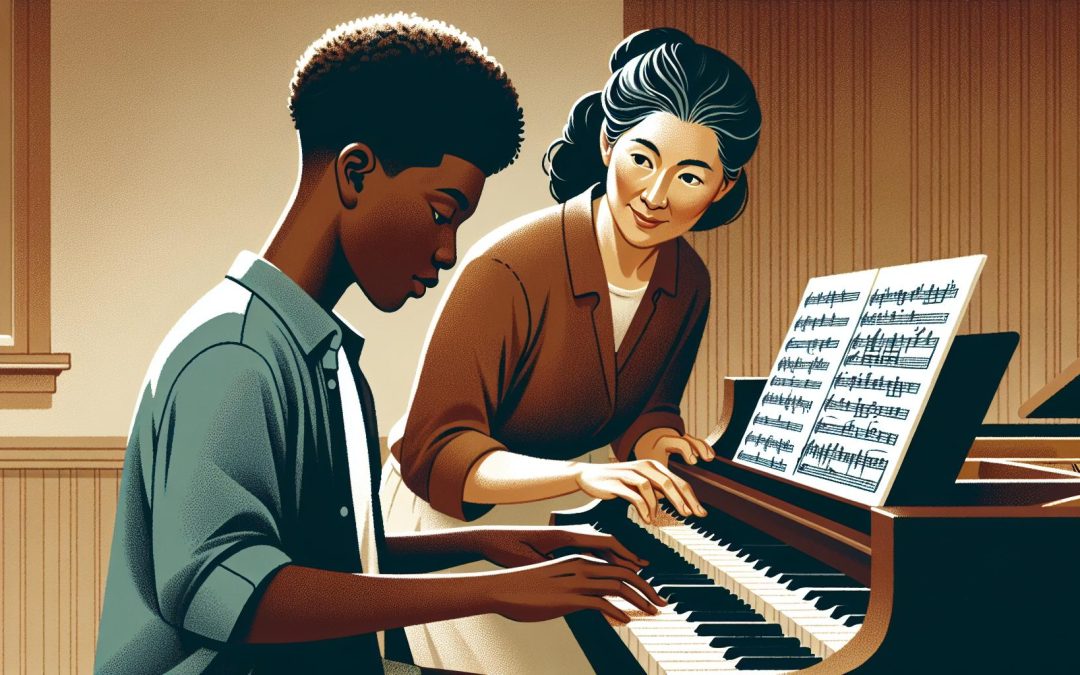Diving into a new piano piece is like embarking on an adventure. The anticipation, the challenge, and the thrill of mastering something new can be exhilarating. But sometimes, we bite off more than we can chew, leaving us feeling frustrated and stuck. It's a common dilemma for pianists at any level, figuring out if a piece is just challenging enough or way out of our league.
Knowing the signs that a piece might be too hard can save you hours of frustration and keep your musical journey enjoyable. Whether you're a beginner, an intermediate player, or even advanced, there's always that fine line between a challenge that pushes you to grow and one that's downright discouraging. Let's explore how to spot the difference and make sure your piano practice stays productive and fun.
Assessing the Technical Difficulty
When embarking on the journey of learning a new piano piece, pianists often face the question of whether a particular composition is too complex for their current skill set. Assessing the technical difficulty of a piece is a critical step in this process, as it helps prevent frustration and ensures that the learning experience remains enjoyable and productive.
First, checking the score for indicators of technical challenges is essential. This preliminary step gives pianists an overview of what to expect before they even place their fingers on the keyboard. Signs to look out for include:
- Dense chord progressions
- Fast tempo markings
- Complex rhythms
- Extended passages of rapid notes
- Frequent hand position changes
These elements can often serve as red flags, signaling that a piece might require skills beyond the pianist's current capability.
Another reliable method for assessing a piece's difficulty is to listen to recordings by seasoned professionals. This approach provides valuable insight into the interpretative challenges and the level of technical proficiency needed to tackle the piece convincingly. If a pianist finds themselves overwhelmed by the speed, dexterity, or emotional depth required in these performances, it might be a sign that the piece is too advanced for the moment.
Practitioners should also evaluate their own physical response to playing a piece. Signs of excessive tension, fatigue, or discomfort can indicate that a piece is currently beyond one's technical grasp. It's crucial for pianists to listen to their bodies and acknowledge when a composition demands more than they can physically offer without risking strain or injury.
| Indicator | Potential Significance |
|---|---|
| Dense chord progressions | Technical complexity, requires strong hand independence and coordination |
| Fast tempo markings | Demands high level of dexterity and precision |
| Complex rhythms | Needs advanced rhythmical understanding and execution |
| Rapid note passages | Requires agility, speed, and accuracy |
| Frequent hand position changes | Challenges hand mobility and spatial awareness |
Ultimately, making an honest assessment of one's own abilities in relation to the piece's demands is essential for determining its suitability. It’s perfectly acceptable, and even recommended, for pianists to work on sections of a piece that are manageable for them while gradually building up to more complex segments.
Evaluating the Tempo and Rhythm

When assessing the technical difficulty of a piano piece, closely examining the tempo and rhythm can offer essential clues. These elements not only contribute to the musicality of the piece but also significantly impact its playability for the pianist. Tempo—the speed at which a piece is played—often dictates the overall energy and feel of the music. Rhythm, which encompasses the pattern of notes and rests, adds to the complexity by introducing syncopations, irregular groupings, or compound timings that require precision and control.
For pianists wondering whether a piece might be too challenging, they should start by observing the tempo markings. Works marked with Allegro (fast), Vivace (lively and fast), or Presto (very fast) suggest that the composer intended for these pieces to be played at a pace that can be demanding for less experienced players. On the other hand, pieces with Adagio (slowly), Andante (walking pace), or Moderato (moderately) not only allow for more reaction time but also afford pianists the opportunity to focus more on expression and dynamics rather than just keeping up with speed.
Rhythmic complexity adds another layer to consider. Polyrhythms—the simultaneous use of two or more conflicting rhythms—and syncopation, where emphasis is placed on normally unaccented beats, can make a piece particularly challenging. Dissecting these rhythmic elements requires a pianist to possess a solid sense of timing and an ability to maintain multiple rhythms concurrently. A useful strategy for tackling intricate rhythms includes:
- Breaking down the piece into manageable sections.
- Clapping out the rhythms before attempting to play them.
- Using a metronome to gradually increase the playing speed as comfort with the rhythm develops.
Moreover, it’s beneficial to listen to professional recordings of the piece. This practice can provide insights into how the tempo and rhythm interplay to create the piece’s character. Hearing a professional tackle the rhythms and tempo can also offer a sense of the pacing required, which might illuminate areas of difficulty for the pianist to concentrate on.
Considering the Complexity of Musical Notation

When embarking on the journey of learning a new piano piece, one cannot overlook the complexity of its musical notation. This aspect of a composition is as vital as its tempo and rhythm for determining its difficulty. Musical notation encompasses everything from the notes and chords to the key signatures and the myriad of symbols that convey the composer's intentions. These elements combined can offer a clear indicator of whether a piece might be too challenging.
Firstly, key signatures play a crucial role. Pieces with numerous sharps or flats can be more difficult, especially for beginners, as they require a deeper understanding of music theory and finger dexterity. For example, a piece in C# major, with its seven sharps, demands more from the pianist than a piece in C major, which has no sharps or flats. It’s about familiarity and comfort level as much as it is about skill.
Additionally, the density of notes on the page can be a telltale sign. A glance at the score reveals much about the piece's complexity. Scores dense with notes, especially sixteenth notes or thirty-second notes, indicate a piece that will require rapid finger movements and considerable hand coordination. On the other hand, a piece that appears more sparse may suggest a slower tempo or fewer simultaneous notes, potentially making it easier to manage.
Symbols for dynamics and articulation, such as forte (loud), piano (soft), staccato (short), or legato (smooth and connected), also inform the pianist about the expressive demands of the piece. Interpreting these symbols correctly and executing them effectively can significantly increase the difficulty of a piece.
One shouldn't overlook accidental notes (sharps, flats, and naturals that aren't part of the original key signature). They can pop up frequently in more complex compositions, requiring the pianist to adjust quickly. These accidentals add layers of complexity, as they often lead to unusual fingerings or hand positions.
Here are some strategies to deal with challenging notations:
- Practice sight-reading: Regularly sight-reading can improve the ability to quickly interpret complex musical notations.
- Study music theory: A solid foundation in music theory aids in understanding and navigating pieces with complex key signatures and harmonies.
- Take it slow: Break down difficult sections and practice them slowly, gradually increasing the tempo as you become more comfortable.
Taking Note of Hand Coordination Challenges

Determining if a piano piece is too challenging often goes beyond the sheer complexity of its notation. Hand coordination plays a pivotal role in executing a composition effectively. This element is about how well a pianist can manage simultaneous yet distinct actions between their right and left hands. For some, pieces with extensive hand independence requirements signal a significant difficulty.
Complex pieces often demand that a pianist's hands not only play different notes but also embrace different rhythms and dynamics simultaneously. This can be particularly challenging when one hand is tasked with maintaining a steady rhythm or pattern while the other hand plays a melody or intricate passage. The skill to do this well usually comes with time, practice, and a keen sense of rhythm and coordination.
Identifying Hand Coordination Hurdles
To gauge whether hand coordination in a specific piece might be a challenge, pianists can look for:
- Passages with polyrhythms: Where the two hands play different rhythms that intersect in complex ways.
- Wide stretches or jumps: These require precise hand movements and can disrupt the flow if not executed well.
- Simultaneous dynamics: One hand playing forte (loud) while the other plays piano (soft), demanding control and precision.
Pieces with these characteristics may require a pianist to allocate more practice time to overcome these coordination hurdles. It's also helpful to break down the piece into smaller sections, focusing on areas where the hands must perform contrasting actions.
Strategies for Enhancing Coordination
There are several strategies that pianists can use to improve their hand coordination:
- Slow practice: Playing a piece slowly allows the brain to process the different actions each hand must perform and can help in building muscle memory.
- Hands separately practice: Learning each hand's part individually before putting them together can make the coordination more manageable.
- Use of a metronome: This can help maintain a steady pace and ensure that rhythms are accurately executed.
Additionally, some exercises are designed specifically to enhance hand independence and coordination. Hanon exercises, for instance, are popular for building strength and agility in pianists’ fingers, helping them manage more complex compositions.
Consulting with a Piano Teacher

Seeking advice from a seasoned piano teacher is arguably one of the most effective ways to gauge if a piece is too challenging. Experienced instructors have the insight to evaluate a student's skill level, learning pace, and adaptability to new pieces. They can instantly recognize if a piece is a good fit or if it stands well beyond the current capabilities of the student.
Teachers use various methods to assess a student's readiness for a piece. They may begin with sight-reading exercises or ask the student to play a segment to understand their natural affinity towards the composition. Through meticulous observation, they can identify if the student struggles with certain technical aspects, such as finger dexterity, hand coordination, or rhythm.
Moreover, piano instructors often have a repertoire of pieces that range in difficulty and can suggest alternatives that are more aligned with the student's current level. This tailored approach ensures that the student remains challenged without feeling overwhelmed. Discussions with a piano teacher can also reveal the areas where a student needs more practice or specific exercises to build their skills up to the level required for the piece at hand.
Another significant aspect of consulting with a piano teacher is setting realistic goals and timelines. Sometimes, a piece may not be too hard in its entirety but might contain sections that require more focused practice. A teacher can help break down the piece into manageable parts, focusing on mastering each section before moving on. This step-by-step approach promotes a sense of accomplishment and keeps the student motivated throughout the learning process.
Piano teachers also emphasize the importance of gradual progression in learning. They advocate for moving through pieces that incrementally increase in difficulty. This strategy not only builds technical skills but also enhances musical understanding and interpretative abilities. By following this structured learning path, students can tackle progressively challenging pieces with confidence.
Engaging in regular discussions with a piano teacher about one’s progress, challenges, and the appropriateness of the repertoire is invaluable. This ongoing dialogue ensures that the student’s development is continuously monitored and that adjustments are made as necessary to align with their evolving capabilities and musical goals.
In essence, consulting with a piano teacher provides a comprehensive assessment of a student’s readiness to tackle specific pieces. It's a dynamic process that takes into account the technical, emotional, and interpretative dimensions of playing the piano. With their guidance, students can navigate the complexities of piano repertoire more effectively, ensuring a rewarding and enriching learning experience.
Conclusion
Deciding whether a piano piece is too challenging doesn't have to be a solo journey. A piano teacher's role is invaluable in guiding students through the maze of repertoire, ensuring they're not biting off more than they can chew. Through their expertise, students can embark on a musical journey that's both challenging and rewarding, without the frustration of tackling pieces beyond their reach. Remember, musical growth is about the journey, not just the destination. With the right guidance and a bit of patience, students will find themselves playing pieces they once thought impossible. So keep the lines of communication open with your teacher and embrace the adventure of learning piano, one note at a time.
Harlan Kilstein began playing piano during covid with no piano background at all. He taught himself how to play learning what to do and what not to do.
Today he's an advanced intermediate player and can help you grow in your skills because he learned all this on his own.








